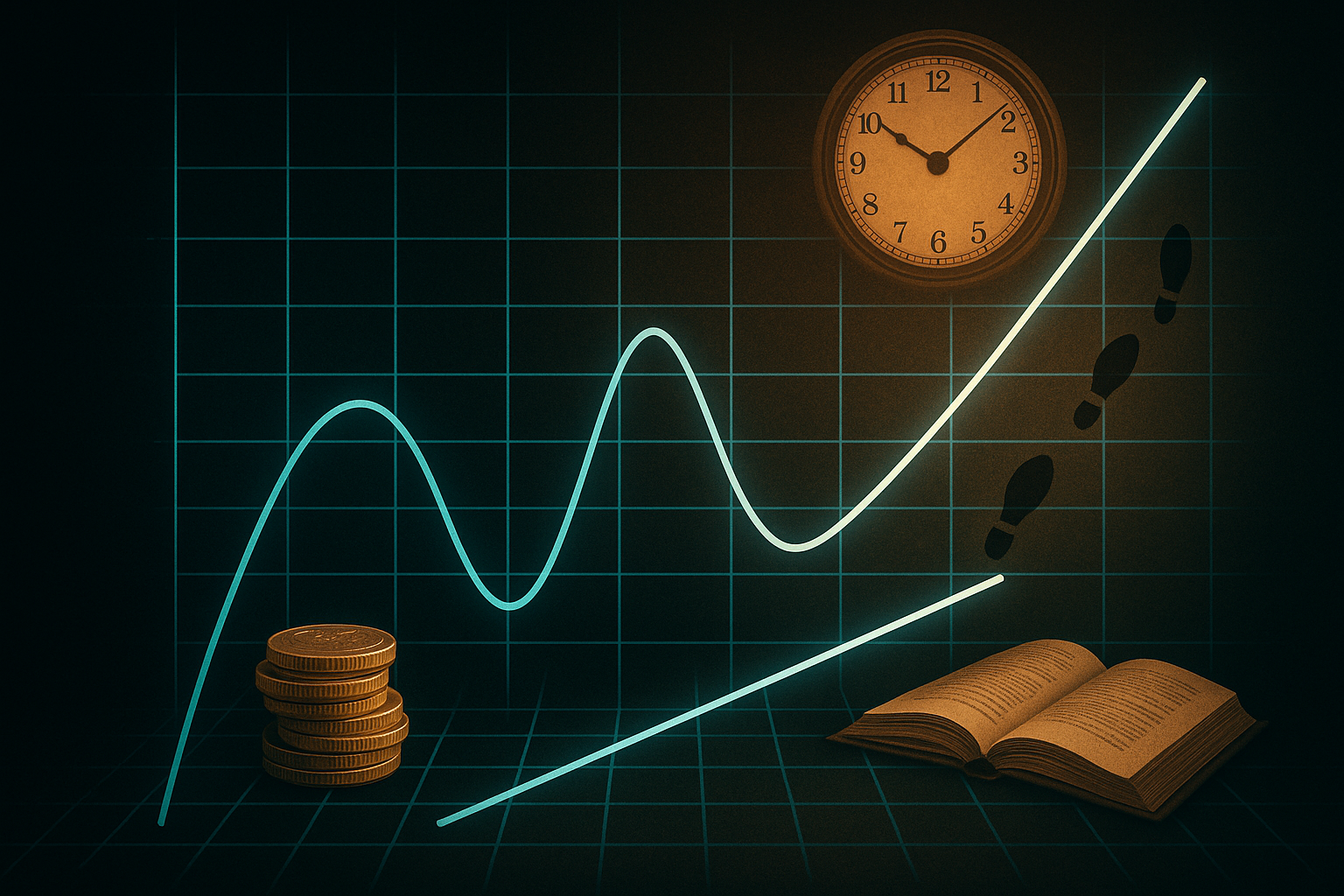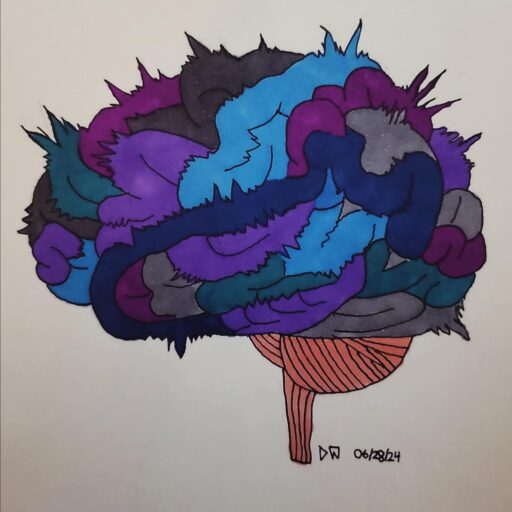Your cart is currently empty!
Plotting Life’s Equations

How Mathematical Functions Shape Our Everyday Decisions
Most of us don’t think about algebra the moment we wake up. We’re not typically plotting graphs before coffee or calculating slopes during a morning commute. But what if I told you that the quiet power of functions—those seemingly abstract mathematical tools—are quietly guiding the decisions we make every single day?
This week, I revisited a concept from algebra that holds more weight than I ever expected: the relationship between domain and range in mathematical functions. On the surface, these ideas may seem reserved for textbooks and test prep—but when applied to real life, they become maps. They help us forecast growth, compare options, and uncover patterns that shape how we spend our time, energy, and money.
Let’s explore what it means to view life’s choices as equations—and how embracing this perspective can sharpen our planning and decision-making skills.
🧩 What is a Function, Really?
At its simplest, a function is a relationship between an input and an output. You plug something in—like a number, a value, or a decision—and you get something out.
In mathematical terms:
- The domain represents all the possible inputs (typically x-values).
- The range reflects all the possible outputs (the corresponding y-values).
This structure isn’t limited to math. It mirrors the way life works. You invest time into a job—you get a paycheck. You spend hours studying—you improve your knowledge. The choices we make are inputs. The consequences, outcomes, or benefits are the results—the outputs. When understood through this lens, life begins to resemble a series of beautifully interconnected functions.
💸 Real-Life Functions: ATMs, Paychecks, and Planning Ahead
Take something as ordinary as withdrawing cash from an ATM. The machine becomes the function. The amount you request—the domain—is the input. The money dispensed—the range—is the output. The machine cannot dispense more than you have available. That limitation? It’s a restriction of the domain. You can’t input a value that exceeds your balance and expect a valid output. The system, like life, has boundaries.
Another practical example? Hourly wages.
Let’s say you work for $18/hour. If x represents the hours worked and y represents your earnings, then:
y = 18x
This function instantly becomes a powerful planning tool. If you know you want to earn $540, simply solve for x:
540 = 18x → x = 30 hours
With just a basic understanding of this linear function, you’ve empowered yourself to calculate time, income, and financial goals with confidence.
📈 Saving Smarter with Graphs
In my personal life, one of the most exciting ways I apply functions is in saving money. Using a linear function, I can visualize how my savings will grow over time with regular deposits and interest.
Let’s say I deposit $100 every month into a savings account with a simple interest structure. This function might look like:
y = 100x + initial amount
By plotting the line on a graph, I can see the projection of my savings over time. Each point tells a story. Every x-value (month) has a corresponding y-value (savings total). The slope? That’s the rate of financial progress. It becomes not just math—but motivation. A graph becomes a visual map of patience, discipline, and growth.
🤔 Decision-Making with Multiple Options
This week’s lessons also introduced me to the power of comparing two linear functions—an insight that’s deeply relevant when we’re faced with two competing choices. Suppose I’m considering two job offers. One offers a higher hourly wage but fewer hours. The other offers more consistent hours but at a slightly lower pay rate.
I can write out both as linear functions and graph them to find the break-even point—the x-value where both options would yield the same income. Beyond that point, I’d know which job benefits me more long-term. This method strips the guesswork and brings clarity to uncertainty.
This approach isn’t just about numbers—it’s about life. About being equipped with tools that turn possibilities into plans.
✨ Life as a Function
Understanding domain and range in mathematics has taught me more than just how to solve for x or y. It’s taught me how to think—how to examine my inputs, assess my limitations, and predict outcomes. It’s shown me that equations are not confined to classrooms. They are all around us—in the way we work, the way we save, the choices we weigh.
Every action we take is part of a greater function, each result part of a growing range. By seeing our lives through this mathematical lens, we unlock not only smarter decisions—but deeper awareness.
So the next time you’re torn between two paths, ask yourself:
What is the function? What are my inputs? What outcomes do I want—and what do I need to plug in to get there?
Because sometimes, plotting your life on a graph is the clearest way to see the future.
🧠 Functions, Balance, and Mental Health
What struck me most while revisiting functions wasn’t just their usefulness in finances or planning—it was how naturally they mirror mental health. Just like a function depends on inputs to determine its outputs, our well-being depends on the choices, habits, and energy we put into our days.
When the domain of our life includes rest, support, therapy, or creativity, the range often reflects resilience, stability, and growth. But when the inputs are stress, silence, or unresolved pain, the outcomes inevitably shift. Recognizing this relationship reminds us that caring for ourselves isn’t optional—it’s mathematical.
Even setbacks can be plotted. A steep drop in mood or energy isn’t the end of the graph, but a point that shows us where we’ve been—and where the slope can rise again. In this way, functions give us a language for hope: every low point still belongs to a line that can climb.
Life, after all, is not just about surviving equations—it’s about finding the rhythm between variables, even in the chaos. In that balance, patterns emerge. Patterns that remind us healing, like math, is not random, but structured, patient, and worth charting.
📘 Further Reading & References
- Sullivan, Michael. College Algebra. Pearson, 10th Edition.
- OpenStax. “Linear Functions.” Precalculus, OpenStax CNX, 2023.
- Larson, Ron, et al. Algebra and Trigonometry. Cengage Learning, 9th Edition.
Discover more from Poetic Bipolar Mind
Subscribe to get the latest posts sent to your email.
-

Rodriguez’s Mother’s Depressed State and Disappointment
Through narrative clues, Richard Rodriguez reveals his mother’s quiet sadness during a Christmas gathering. Surrounded by gifts yet emotionally distant, her faint smiles and contemplative silence expose the tension between outward festivity and inner disappointment. This subtle portrayal underscores the complexity of family dynamics and the emotional weight of unspoken expectations.
-

A Mother’s Desire for Her Children to Have Better Lives
A mother’s love carries both hope and burden. Richard Rodriguez’s narrative reveals the complexities of maternal desire for children’s success, the weight of expectations, and the delicate balance between guidance and individuality. This reflection invites readers to explore family dynamics, sacrifice, and the emotional ties that shape our lives.
-

Adrift in Darkness and Doom
Dave White’s Ghost Ship and Kiana Jimenez’s Night Ritual converge in a chilling meditation on death, solitude, and the unknown. The spectral vessel adrift on a darkened sea echoes the poem’s storm of fear and doom, merging art and verse into a haunting reflection of mortality and the spaces beyond.

Leave a Reply